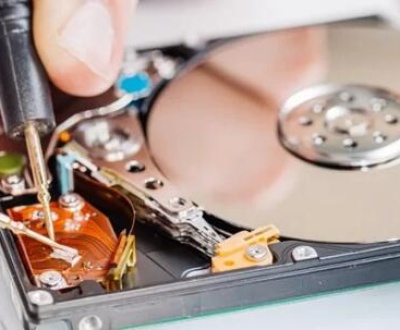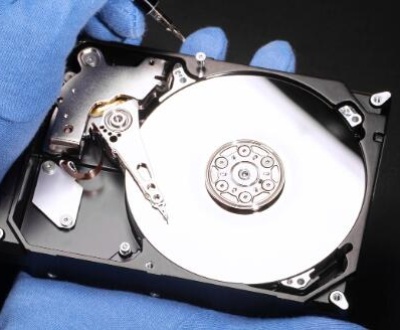Losing important files can be a frustrating experience, especially when they contain vital information or memories. Whether it’s a document, photo, or any other type of file, the good news is that Windows 10 offers several methods to recover deleted files.
1. File Deletion in Windows 10
Before diving into recovery methods, it’s crucial to understand how file deletion works in Windows 10. When you delete a file, it is not immediately removed from your hard drive. Instead, it is moved to the Recycle Bin. If you delete the file from the Recycle Bin or use Shift + Delete, the file is marked as deleted, but the data remains on the disk until it is overwritten by new data.

2. Checking the Recycle Bin
Steps to Recover Files
Open the Recycle Bin:
Double-click the Recycle Bin icon on your desktop.
Search for Deleted Files:
Browse through the list of deleted files.
You can use the search bar in the top-right corner to find specific files.
Restore the File:
Right-click on the file you want to recover.
Select “Restore.” This action will return the file to its original location.
Tips
If you don’t see the file, ensure you’re looking for the correct file name or type.
Files in the Recycle Bin can only be recovered if they haven’t been permanently deleted.
3. Using File History
If you have File History enabled, it’s an excellent way to retrieve deleted files.
Steps to Use File History
Access File History:
Go to Settings > Update & Security > Backup.
Click on “More options” under Backup.
Restore Files:
Click on “Restore files from a current backup.”
Browse through the available backups to locate your deleted file.
Select and Restore:
Once you find the file, click the green “Restore” button to recover it to its original location.
Tips
File History needs to be set up in advance. If it wasn’t enabled, this method won’t work.
You can also navigate to the folder where the file was stored, right-click, and select “Restore previous versions” to view available backups.
4. Restoring Previous Versions of Files
Windows 10 allows you to restore previous versions of files and folders if you have enabled System Restore.
Steps to Restore Previous Versions
Navigate to the Folder:
Go to the folder where the deleted file was stored.
Right-Click on the Folder:
Select “Restore previous versions” from the context menu.
Choose a Version:
A list of available previous versions will appear.
Select a version from the list and click “Restore.”
Tips
This method relies on System Restore points, so it must be enabled for previous versions to be available.
If your system has created restore points regularly, you may have multiple versions to choose from.
5. Using Windows File Recovery Tool
Windows 10 includes a built-in recovery tool that can help you recover deleted files, especially if they are not found in the Recycle Bin.
Installation
Download the Tool:
Search for “Windows File Recovery” in the Microsoft Store and install it.
Using the Tool
Open Command Prompt:
Type “cmd” in the Windows search bar, right-click on Command Prompt, and select “Run as administrator.”
Use the Recovery Command:
The command syntax is:
bash
winfr source-drive: destination-drive: /mode /criteria
For example, to recover files from the C: drive to D: drive using the regular mode, the command would look like:
mathematica
winfr C: D: /regular
Tips
Ensure you specify the correct drives.
Familiarize yourself with the command-line interface, as this tool does not have a graphical user interface.
6. Third-Party Recovery Software
If built-in methods fail, numerous third-party recovery software options are available that can help recover deleted files.
Recommended Software
Panda Assistant is a powerful and intuitive data recovery software designed to help users effortlessly recover lost or deleted files from various storage devices, including SD cards, USB drives, and external hard drives. With its user-friendly interface, Panda Assistant caters to both beginners and advanced users, ensuring a seamless recovery experience.
The software employs advanced algorithms to scan and retrieve data lost due to accidental deletion, formatting, or corruption. Users can easily navigate through its straightforward layout to select the storage device they wish to recover files from and initiate a thorough scan. The program displays recoverable files in an organized manner, allowing users to preview and select specific items for restoration.
Steps to Use Third-Party Software
Download and Install the Software:
Choose one of the recommended software and install it on a different drive to avoid overwriting data.
Run the Software:
Open the software and select the drive from which you want to recover files.
Scan for Deleted Files:
Initiate a scan to search for recoverable files.
Select and Recover:
Review the scanned results, select the files you want to recover, and follow the prompts to restore them.
Tips
Some software options have a free version with limitations, such as the maximum size of recoverable files.
Always download software from reputable sources to avoid malware.
7. Checking OneDrive
If you use OneDrive for file storage, deleted files may be retrievable from its Recycle Bin.
Steps to Recover from OneDrive
Log in to OneDrive:
Go to the OneDrive website and sign in with your Microsoft account.
Access the Recycle Bin:
Click on the “Recycle Bin” option in the left sidebar.
Restore Files:
Browse for the deleted files, select them, and click “Restore.”
Tips
OneDrive keeps deleted files for a limited time, so act quickly to recover them.
Sync settings may also affect file availability, so ensure OneDrive is configured correctly.
8. Using Data Recovery Services
If you have tried all the above methods and still cannot recover your files, professional data recovery services may be your best option.
When to Consider Professional Help
Physical damage to your hard drive.
Complex data loss situations where DIY recovery is insufficient.
Choosing a Data Recovery Service
Research: Look for reputable data recovery companies with positive reviews.
Consultation: Many companies offer free consultations to assess your situation.
Costs: Understand the pricing structure, as recovery can be costly.
Tips
Avoid using the affected drive to prevent further data loss.
Ask about success rates and guarantees before committing to a service.
9. Preventing Future Data Loss
To minimize the chances of losing important files in the future, consider the following strategies:
Regular Backups
Use Windows File History or third-party backup solutions to keep your data safe.
Consider cloud storage solutions like OneDrive, Google Drive, or Dropbox.
Enable System Restore
Regularly enable and configure System Restore points to safeguard your system files and settings.
Be Cautious with Deletions
Always double-check before deleting files, especially when using Shift + Delete.
About us and this blog
Panda Assistant is built on the latest data recovery algorithms, ensuring that no file is too damaged, too lost, or too corrupted to be recovered.
Request a free quote
We believe that data recovery shouldn’t be a daunting task. That’s why we’ve designed Panda Assistant to be as easy to use as it is powerful. With a few clicks, you can initiate a scan, preview recoverable files, and restore your data all within a matter of minutes.
Subscribe to our newsletter!
More from our blog
See all postsRecent Posts
- Data recovery salt lake city utah 2025-04-18
- Data recovery sacramento 2025-04-18
- Data recovery miami 2025-04-18

 Try lt Free
Try lt Free Recovery success rate of up to
Recovery success rate of up to









